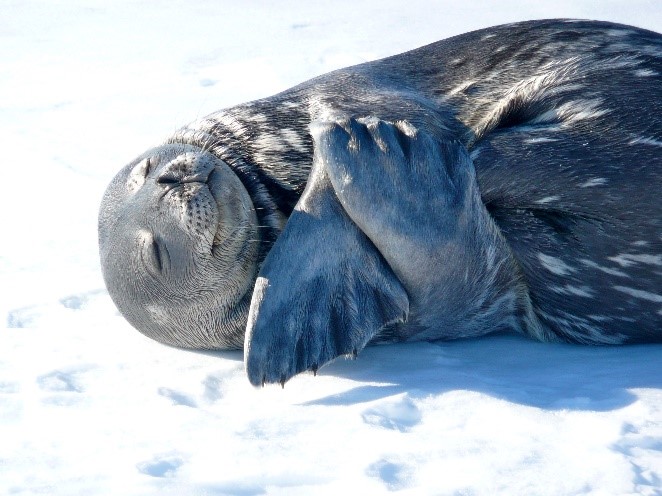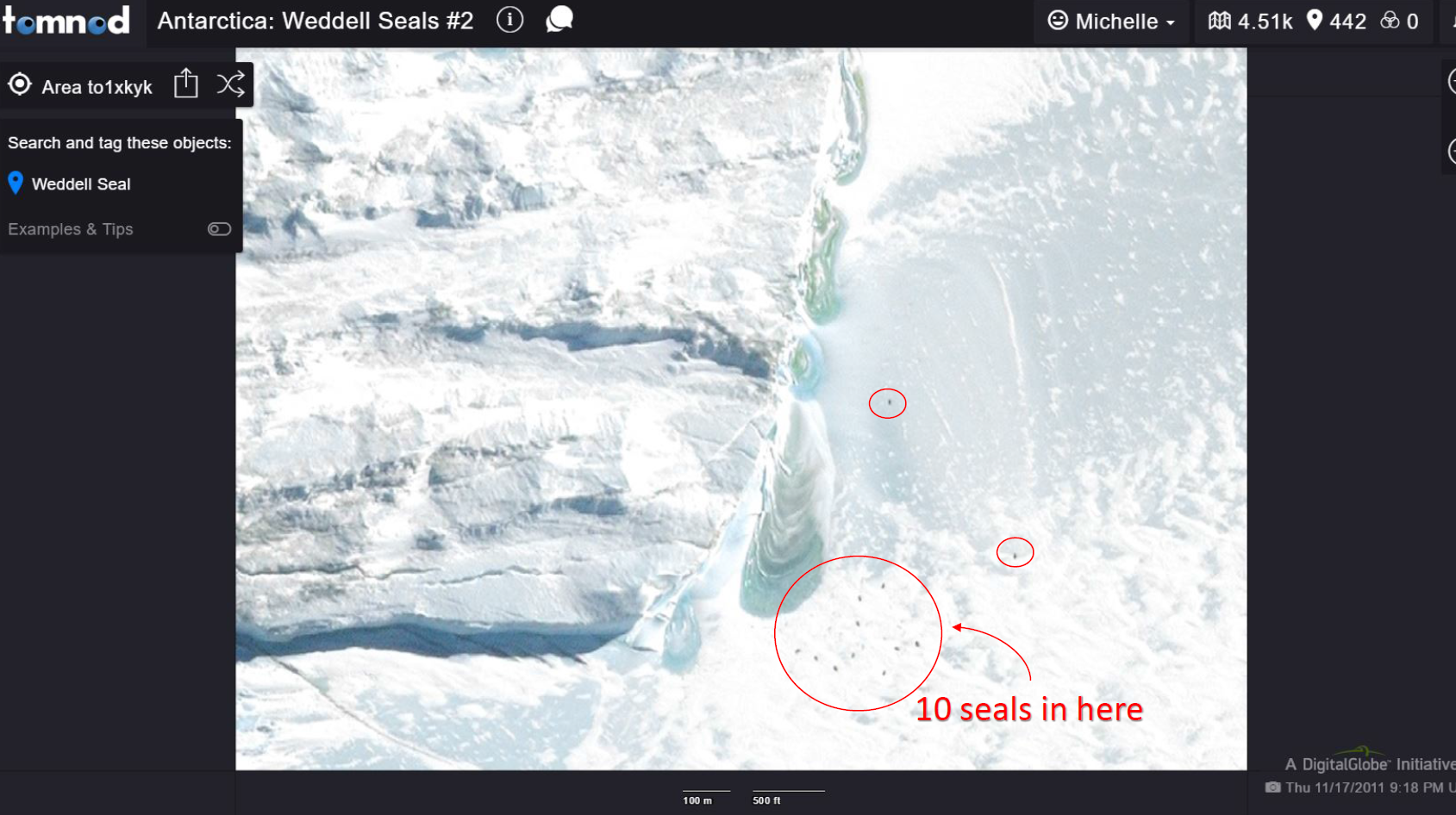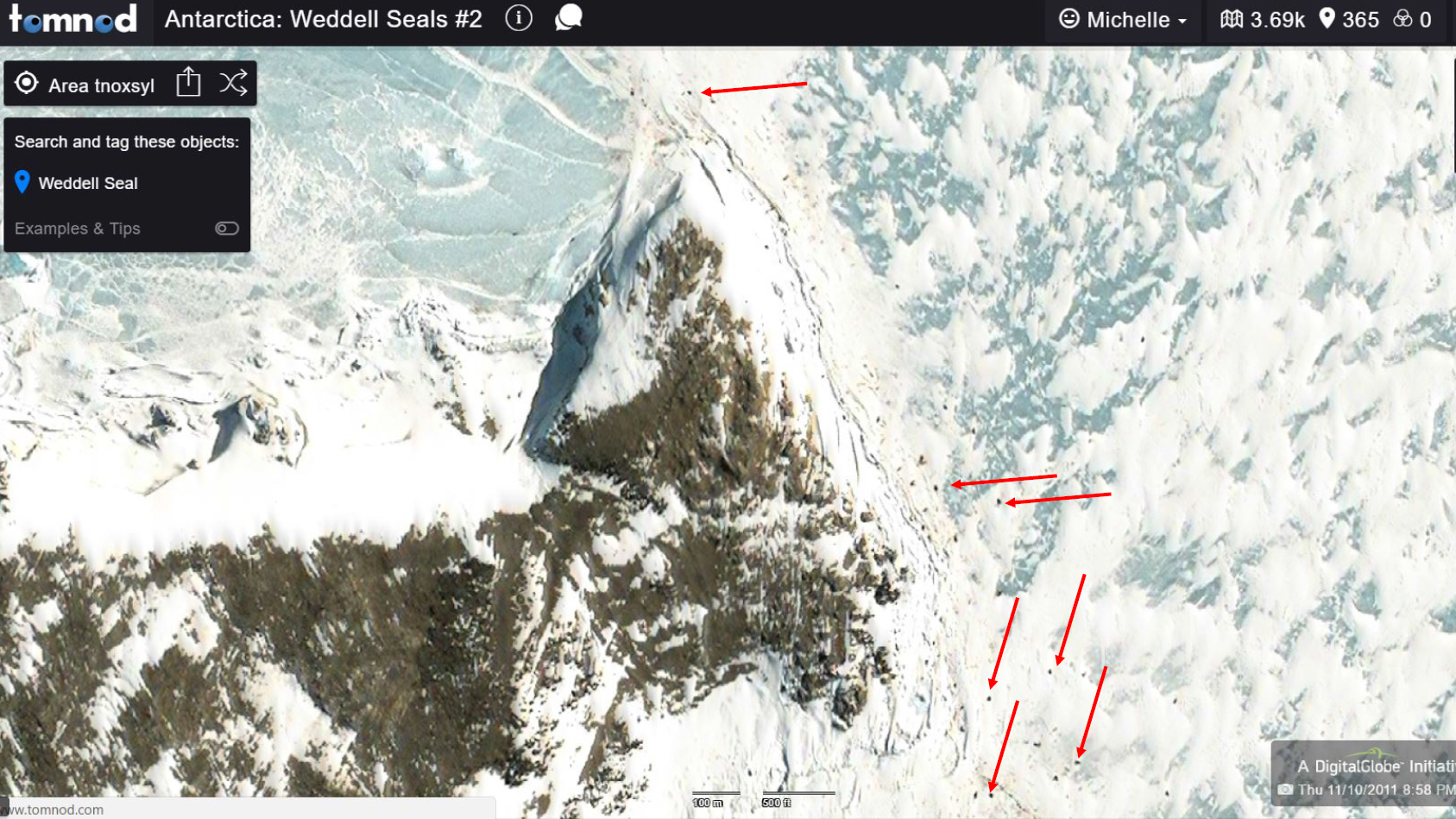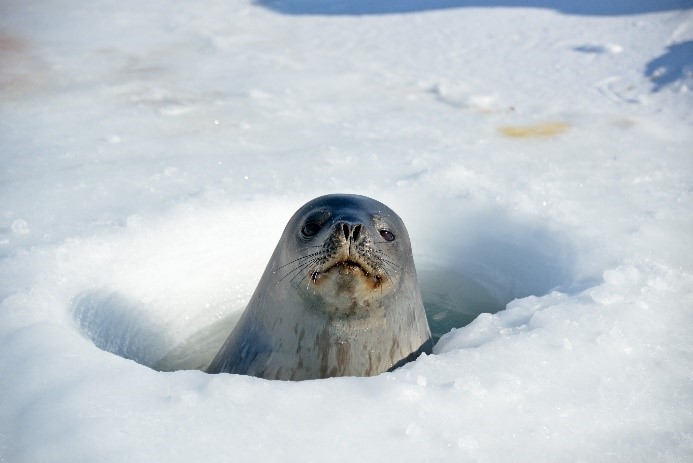 © Kim Goetz[/caption]
You may recall last summer when we launched our first SOS campaign – SOS standing for “Satellites Over Seals” – asking for you, the ever-awesome crowd, to help us count Weddell seals from high-resolution satellite imagery. You may also recall my excitement when my team and I learned just how much area you searched in a very short time: In less than two months, ~5,000 volunteers covered roughly the same amount of area that a ground crew covered in a decade. Incredible.
© Kim Goetz[/caption]
You may recall last summer when we launched our first SOS campaign – SOS standing for “Satellites Over Seals” – asking for you, the ever-awesome crowd, to help us count Weddell seals from high-resolution satellite imagery. You may also recall my excitement when my team and I learned just how much area you searched in a very short time: In less than two months, ~5,000 volunteers covered roughly the same amount of area that a ground crew covered in a decade. Incredible.
 But now we’re back and we need some more help. Before I get too far, though, I want to give you an idea of what we’re doing with that first round of data that you helped to gather. The focus of the first campaign was primarily to learn how to do this better – to learn from experiences and apply that information so we can do our research better and to enhance your experience as you’re helping us out. And we learned a couple things:
We now know to keep the search areas relatively small – to make sure that you’re looking in good seal habitat (on the fast ice), and not out in the pack ice in the middle of the ocean. This will drastically increase your success in finding seals with us!
But now we’re back and we need some more help. Before I get too far, though, I want to give you an idea of what we’re doing with that first round of data that you helped to gather. The focus of the first campaign was primarily to learn how to do this better – to learn from experiences and apply that information so we can do our research better and to enhance your experience as you’re helping us out. And we learned a couple things:
We now know to keep the search areas relatively small – to make sure that you’re looking in good seal habitat (on the fast ice), and not out in the pack ice in the middle of the ocean. This will drastically increase your success in finding seals with us!

 We revised our instructions with better pointers and examples of how to successfully identify seals. For example? Seals need to be on the ice for us to see them – so look for cracks and features that cause cracks, like icebergs, islands, land, or glaciers and you’re much more likely to find our seals!
We revised our instructions with better pointers and examples of how to successfully identify seals. For example? Seals need to be on the ice for us to see them – so look for cracks and features that cause cracks, like icebergs, islands, land, or glaciers and you’re much more likely to find our seals!
 Not to get too nerdy on you, but we’re also using the thousands of data points to help us build statistical models to estimate populations of Weddell seals. Combining citizen scientists (that’s right, YOU) and satellite imagery to do wildlife ecology research has never been done before. You read that correctly, this has never been done before. You’re helping us develop a new area of science and that’s really exciting. THANK YOU.
So what are we up to now? This time around, based on what we learned already, we are going for the holy grail: a first-ever census of Weddell seals around the entirety of Antarctica. Right now, everything we know about Weddell seals is limited to an area representing less than one percent of the coastline around Antarctica.
Not to get too nerdy on you, but we’re also using the thousands of data points to help us build statistical models to estimate populations of Weddell seals. Combining citizen scientists (that’s right, YOU) and satellite imagery to do wildlife ecology research has never been done before. You read that correctly, this has never been done before. You’re helping us develop a new area of science and that’s really exciting. THANK YOU.
So what are we up to now? This time around, based on what we learned already, we are going for the holy grail: a first-ever census of Weddell seals around the entirety of Antarctica. Right now, everything we know about Weddell seals is limited to an area representing less than one percent of the coastline around Antarctica.
We need your help searching the remaining 99% so we can get understand where seals live – and why.
So, will you join us in doing the first ever census for Weddell seals in Antarctica? We literally couldn’t do this without you… so thank you, THANK YOU for all your help – and happy searching! Get started here. [caption id="attachment_5377" align="aligncenter" width="693"] © Kim Goetz[/caption]
© Kim Goetz[/caption]